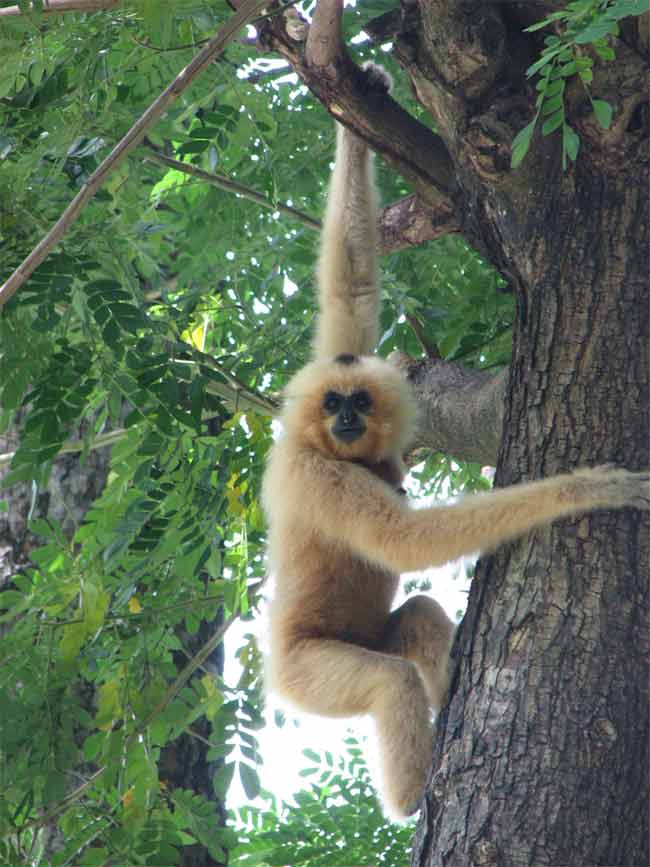Threatened Monkey Populations Surprisingly Large

A new census in Cambodia reveals remarkably large populations of two monkey species that are threatened with extinction.
The monkey tally, announced today, represents the largest known populations of these species in the world.
Scientists with the Wildlife Conservation Society counted 42,000 black-shanked douc langurs and 2,500 yellow-cheeked crested gibbons in Cambodia's Seima Biodiversity Conservation Area, which is about the size of Yosemite National Park.
The WCS surveys were conducted with the Royal Government of Cambodia’s Ministry of Agriculture, Forestry and Fisheries.
The two primate species are found in much lower numbers at other sites in Cambodia and Vietnam. Before the recent discovery, Vietnam was thought to be home to the largest known populations of both species, with 600 black-shanked douc langurs and 200 yellow-cheeked crested gibbons.
Yellow-cheeked gibbons (Nomascus gabriellae) spend their time in the upper canopy of the forest where they eat fruits, leaves and insects. The other Cambodia resident, the black-shanked douc langur (Pygathix nemaeus nigripes) also lives in forests, eating mostly leaves but also some fruits and seeds.
The report comes in the same month as a WCS announcement of the discovery of 125,000 western lowland gorillas in northern Republic of Congo.
Sign up for the Live Science daily newsletter now
Get the world’s most fascinating discoveries delivered straight to your inbox.
WCS scientists attribute the Cambodian boon in the two monkey species to several factors, including successful management of the area and cessation of local logging activities. The conservation area in Cambodia was once a logging area where the two monkey species were extensively poached. Then in 2002, the Minister of Agriculture, Forestry and Fisheries declared the region a conservation area and began working with the Wildlife Conservation Society for management of the site.
Other contributors, the researchers say, include a nation-wide gun confiscation program implemented in the 1990s as well as habitat within the conservation area that provides plenty of primate food.
The report doesn't deliver a completely stellar update.
"Despite this good news in Cambodia, the area still remains at risk from conversion to agro-industrial plantations for crops, including biofuels, and commercial mining," said Tom Clements, lead author of the WCS report.
He added that WCS scientists will continue to work with the Cambodian government to help to ensure the survival of the primate populations there.
The research was supported by the U.S. Fish and Wildlife Service's Great Apes Conservation Fund, MacArthur Foundation, Liz Claiborne Art Ortenberg Foundation, ADB Greater Mekong Subregion Core Environment Program and the Danish Government's Danida program.
- Video: Clever Primates
- Top 10 Species Success Stories
- Endangered Species Act Proposal Called Bad Science











